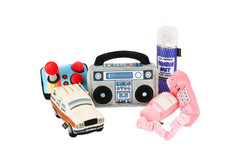Cat owners are familiar with their cats' pee routines due to litterbox responsibility. Regularly cleaning the litter tray is an excellent approach to monitoring your pet's urinary system. Changes in your cat's litter box habits may signal a urinary system problem. But what exactly are cat urinary issues?
Urinary tract issues (UTIs) can occur in any cat at any age, but some breeds are more affected from than others. UTIs can usually be easily treated with medications; however, sometimes surgery may be required for complex/advanced issues (such as blockages or bladder stones, both of which need surgery to treat).
Let us discuss the most common UTIs in felines and how to manage/treat them.
Urinary Tract Infections (UTI) in Cats
Generally, cats with urinary tract infections are at least ten years old and frequently suffer from endocrine illnesses, including hyperthyroidism and diabetes mellitus.
If your feline friend is exhibiting signs of a urinary tract infection and your veterinarian diagnoses cystitis, your kitty's urinary tract infection (UTI) will be treated with an antibacterial medication that your veterinarian will prescribe.
Feline Urinary Tract Disease (FLUTD)
FLUTD refers to a wide range of clinical signs. FLUTD may lead to problems in both the bladder and the urethra of your cat, most commonly resulting in the urethra becoming clogged or preventing the bladder from being able to empty correctly. These diseases, if left untreated, have the potential to grow more severe or even life-threatening.
If your cat has feline lower urinary tract disease (FLUTD), they may have trouble urinating, find it unpleasant, or be unable to do it. They may often urinate or outside the litter box.
Idiopathic Cat Cystitis
Inflammation of the bladder is a symptom of idiopathic cat cystitis, the most frequent form of feline lower urinary tract disease (FLUTD). It is believed that the condition is caused by several factors, including stress, concentrated urine (which is frequent in cats), and injury to the lining of the bladder.
Tom cats have a smaller and longer urethra that can become plugged by leaked proteins and blood. This is a life-threatening condition that prevents the cat from urinating.
Bladder Stones
Bladder stones are a less frequent issue in cats, but they will cause symptoms similar to cat cystitis and can also cause the urethra to get blocked.
Stones like this can form anywhere in the urinary tract, including the kidneys, the urethra, and the urinary bladder. Stones can be removed from the body in some situations by dissolving them or flushing them out. When this is not the case, surgical removal is the only option.
Anatomical Anomalies
If your cat has been in an accident or was born with any physical issues, then any damage that results to their bladder or urethra might create difficulties lower in their lower urinary tract.
Urinary Tract Infections
A cat urinary infection is a rare cause of feline lower urinary tract illness in healthy cats, but cats with diabetes or renal disease are more prone to infection.
Urinary tract infections aren't as common in cats as other urinary issues, but they occur.
What Are The Symptoms of Urinary Tract Issues in Cats?
When your cat has a UTI, you can notice some of the following symptoms:
- Frequent urination but small amounts
- Urinating outside the routine area/litter tray
- Bloody urine
- Straining to urinate
- Crying out in pain while urinating
- Urinary tract licking
If you see any of these signs/symptoms, you need to contact your veterinarian as soon as possible to discuss them. This may indicate that your cat requires emergency veterinary care immediately.
Causes of Feline Urinary Tract Disease
Multiple origins and contributing factors make it difficult to identify and treat FLUTD. Crystals, stones, or debris can build up in a cat's urethra or bladder. The following are some more common causes of issues in the urinary system in cats:
- Incontinence from overhydration or a weak bladder
- Spinal cord issues
- Urine debris causes the urethral plug
- Bladder infection, inflammation, urinary tract infection (UTI)
- Injury or tumor in the urinary tract
- Congenital abnormalities
- Emotional or environmental stressors
If your veterinarian cannot pinpoint the reason for your cat's feline lower urinary tract disease (FLUTD), your cat may be diagnosed with cystitis, which is inflammation of the bladder caused by an infection of the urinary tract.
Diagnosing Feline Urinary Tract Disease
Contact your vet immediately if your cat strains to pee or cries out in pain. Your vet will undertake a physical check to examine your cat's symptoms and a urinalysis to learn more. An ultrasound, radiography, blood tests, and urine culture may also need to be performed.
Treating FLUTD
Lower urinary tract illness in cats, especially idiopathic cat cystitis, can be difficult to treat and may require a specialist or behaviorist. If your cat's urethra is blocked, your vet may need to remove the obstruction and insert a catheter to allow pee to pass.
Treatments for cat cystitis and urinary problems include:
Pain alleviation
Pain treatment is typically provided for feline lower urinary tract disease (FLUTD) since discomfort can worsen FLUTD symptoms and lead the urethra to become more constricted.
Medication
In male cats, several medications that relax the urethra can be used to treat or prevent obstructions in the urinary tract. Your veterinary doctor may prescribe medication to enhance your cat's bladder lining.
Providing the supportive UTI food
If your cat is suffering from any UTI infection, you should consider changing its diet to a more specified disease-curing diet. This diet/kitty food can help your furry friend get back to normal life in no time. But remember to change your kitty feed slowly and gradually.
Stress reduction
Stress can cause idiopathic cat cystitis, so talk to your vet about what could be causing it and how to avoid it. Your vet may advise a veterinary behaviorist or synthetic pheromone therapy for your cat's uneasiness.
Reduction in the concentration of the urine
Your cat needs pH-balanced food and lots of water. If your kitty is used to eating dry food, you might consider moving them over to wet food. If they're eating wet food, add water or offer them tuna or chicken soups (without salt).
Increased water intake
Help your cat drink more water by placing fountains and bowls inside and outside the house. Fill their water bowls, so they don't have to bend over to drink.
Author
I am Thomas P. Doyne (DVM)(MS Animal Breeding and Genetics). I am a professional licensed veterinarian (United Kingdom / Taiwan) and veterinary content writer and have been attached to this industry since 2012. I currently write for cutepetcare.com about the following (along with many more):
- Birds/Pets/Animal Behavior
- Fish/Aquarium
- Pets/Animal Training, especially dog
- Nutrition (Fed and Diet-related)
- Pets Care/Management (Dogs, Cats, Fishes, Birds, Reptiles)
- Healthcare Tips/ Advice
- Surgical techniques/Methods
- Pets/Animal Breed characterization
- Animal and pets Diseases





